Chatbots and AI are currently very popular topics. It’s no wonder, because current technologies allow us to have a meaningful and helpful conversation with a computer better than ever before. For the most part, this already works without it feeling to humans like a conversation with a machine-controlled, “stupid hello-sayer”. In our eyes, however, this should not be the only approach. The user is not helped if the conversation feels subjectively “natural” and friendly, but the actual question is not answered.
In our project Familie und Beruf we were faced with the challenge that the platform provides a large amount of information. We wanted to use a chatbot to save the user a long time searching through the content. At the same time, the chatbot should be friendly and helpful. This was also new territory for us at the beginning.
Here are some valuable experiences:
Every person asks differently
You teach the chatbot questions and answers – e.g. using the QnA Maker from Microsoft. The following points should be taken into account:
- Different questions
- Spelling mistake
- Upper and lower case
- Keywords
- Perverse formulations
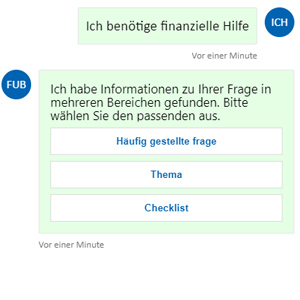
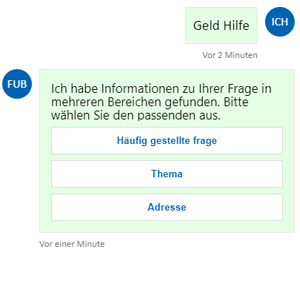
Real help in finding content
The information platform Family and Career offers not only topic-related explanations but also many addresses and contacts. Both should be offered to the user by the chatbot as possible answers to questions.
To do this, we had to define different answer forms. A question about child benefit should therefore provide the general information page as well as the corresponding address. It should also be taken into account that the question can refer to different topics of the entire content. Therefore, the sensible “nesting” of answers is a good approach when there is a great variety of information.
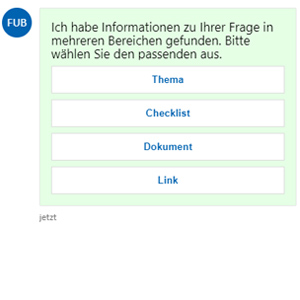

Correct answers or not
Answers should not only be based on content and appearance. An answer that is too long should be output as a direct link leading to the appropriate source.
Dealing with wrong answers should also be taken into account. Here, technologies can be integrated that inform the chatbot of its incorrect answers. In such a case, the user can be offered contact with a real person.
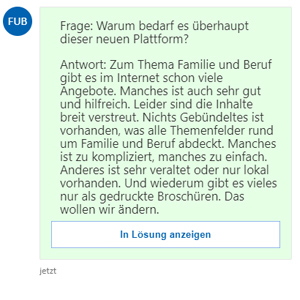
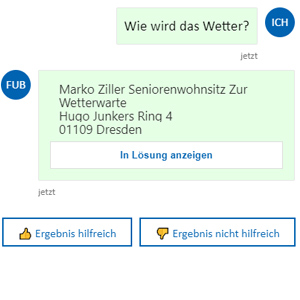
Chatbots as added value
Our conclusion on chatbots: They can offer added value for the user if they are set up with usability in mind. A chatbot should help the user – for example, to find information in complex content. In addition to an appealing look, responsiveness and a minimum of “human small talk, the focus should be on concept and implementation. Only under these conditions will a chatbot be used accordingly.
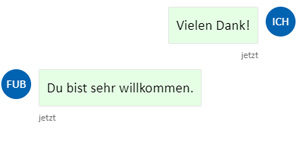
A chatbot for you too?
We would be happy to support you in adding real value to your website with a chatbot..
